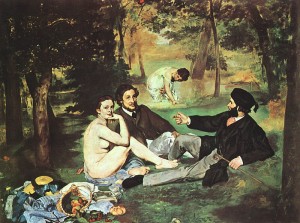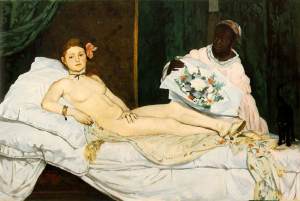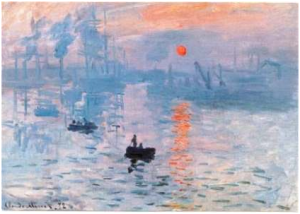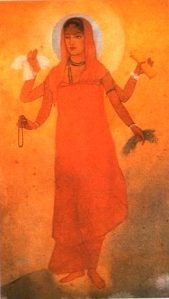Origin of Modern Art
To be modern means to be innovative, forward looking , it could be modern technology, modern society or modern art .
1863 is often regarded as the beginning of Modernism in art in the West, this was the year when famous artist Edouard Manet , displayed his works Le Dejeuner sur l’herbe and Olympia, these paintings caused a scandal in the Paris art circles that year. What was so scandalous about these paintings, that are considered such classical works of art today ?Certainly not the nakedness of the women, the artists at that time were not that prudish ,more over painting nudes was pretty common at that time…what shocked the viewers was the artists deliberate challenge to the way art was created, which stipulated that female nudes be elevated spiritually or through their classical context …What Manet painted were naked women, totally at ease among the men dressed in formal clothes , without the slightest pretense of divinity …
It was around 1870 in Paris, where a circle of painters whom we now know as Impressionists, shook up the established art world. They painted their pictures with broad strokes that seemed unfinished as compared to the meticulous way of painting in those times, they portrayed life on the street instead of overblown heroic scenes . A whole movement of artists emerged who no longer stuck to the prevailing rules, who had not necessarily come up through the academy and for whom individual expression was of prime importance.
The modern period in Indian art began around 1857 or so, I am taking it as a historical premise because The National Gallery of Modern Art, New Delhi covers its collection from about this period. In the west, the modern period starts conveniently with the Impressionists, Indian context is harder to define as India was ruled by the British and the main form of art was miniature paintings that went back to Buddhist and Jain manuscripts of the 9th century and continued through the Mughal period into colonial times. However, when we talk of modern Indian Art, we generally start with the Bengal School of Painting, that started in the late 19th /early 20th century.
The nationalist project in art was led by Abanindranath Tagore (1871-1951) and some enlightened Europeans such as EB Havell, the principal of the Government School of Art in Calcutta from 1896, and Sister Nivedita, an associate of Swami Vivekananda. Moving away from oil painting and subjects that were popular with both the British and Indian intelligentsia, Abanindranath looked to ancient murals and medieval Indian miniatures for inspiration both for subject matter, he used indigenous material such as tempera for his works. They sought to develop an indigenous yet modern style in art as a response to the call for ‘swadeshi’ to express Indian themes in a pictorial language that deliberately turned away from western styles such as those practiced by Raja Ravi Varma.
This was the beginning of Modern art in the West and in India , what followed were various art movements that have inspired and shaped today’s art , the modernist drive to make something new is still alive ,and expresses itself in different forms .



